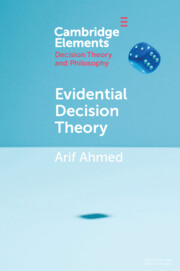Element contents
Evidential Decision Theory
Published online by Cambridge University Press: 24 September 2021
Summary
- Type
- Element
- Information
- Online ISBN: 9781108581462Publisher: Cambridge University PressPrint publication: 21 October 2021
References
- 15
- Cited by

